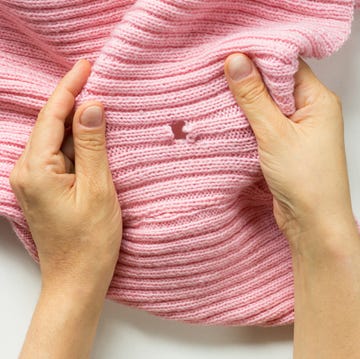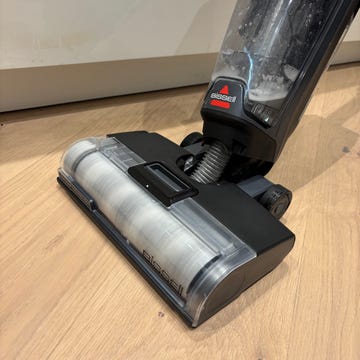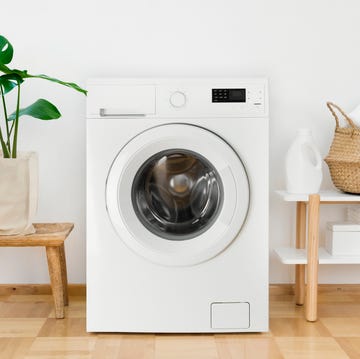Be honest, how many washing machine cycles do you actually use? While the control panel is littered with options (looking more like a scene from Interstellar than a household appliance these days), most of us stick to a couple of programs, or even just the one. It seems almost comical considering how many settings are on offer.
If you’re using the same setting over and over, you could be wasting water, electricity and money, and you might not be cleaning your clothes properly in the first place, leading to musty laundry. By using the most appropriate setting, you can fix this problem. But which washing machine cycles are worth their salt? We’ve rounded up four cycles you should start using, and three you’re overusing, so you can get the most from this machine.
Start using:
1. Eco setting
Yes, the eco setting is an obvious place to start, but many of us still aren’t using this cycle – mainly because of the time it takes to complete. In fact, there’s still a lack of understanding around how it can be called an eco cycle when it takes longer to complete than a standard cycle.
So how does the eco cycle work? Most of the energy consumed by your washing machine goes into heating the water. So, the hotter the cycle, generally the more energy it will use. The process of spinning the drum requires much less energy by comparison. An eco setting works by heating the water to a lower temperature and then washing for an extended amount of time to achieve the same result as a standard cycle. So while it does take longer, it’s actually consuming less water and energy.
The stain removal performance naturally isn’t as strong with this cycle. So it’s best to pre-treat heavy stains beforehand, or switch to a hotter cycle. But for everyday stains, we should definitely be using the eco cycle when we have the time.
2. Self-clean
Many washing machines now come with their own self-clean or service cycles. This setting is essential to keep soap suds and bacteria from building up internally, which can lead to blockages as well as musty smells. It’s also particularly relevant if you tend to use lower temperature cycles, such as the eco or quick wash cycles. These likely won’t reach a high enough temperature to kill the bacteria.
Check your user manual to see how often the brand recommends running this cycle. It should be run while empty, without detergent, so it has a chance to flush itself through. If your machine doesn’t come with a self-clean cycle, you can create your own by running it empty at 60 degrees once a month (60 degrees is the minimum needed to kill bacteria). Don’t forget, you’ll still need to descale your machine and run a washing machine cleaner through it every three to six months.
3. Duvet
Some washing machines have a dedicated duvet cycle. This bulky item is given its own cycle because of the specialist care it requires. If you attempt to wash your duvet or pillows on a standard cycle (without making the necessary setting adjustments), it may not fully rinse away the absorbed suds. Plus, the high spin speed could potentially damage the item.
The dedicated duvet cycle, on the other hand, will thoroughly soak and rinse the item and generally only reach spin speeds of around 800-1,000 rpm. However, this setting usually has a lower capacity of around 2-3kg (roughly the weight of one double duvet), so check this before using. It’s important to avoid exceeding this weight limit when washing a duvet, even on a regular cycle. While it seems a lot less than the standard cotton capacity, a bulky duvet will fill the drum, so sticking to this weight limit will ensure it’s washed properly. The duvet will also weigh much more when wet, so if you exceed the limit, it could cause the machine to lose balance and damage itself as it attempts to spin. It’s for this reason that we also recommend machine-washing two pillows at once (if less than the max capacity) – so the weight is spread across the drum.
If you don’t have a duvet cycle, we recommend washing pillows according to the care label. Use a gentle cycle with warm water if the care label is missing. Use one-third of your usual amount of detergent (stick to liquid, as it can penetrate better than powder) and run an extra rinse cycle. For machine-washable duvets, fold the edges in and wash on a gentle cycle at as high a temperature as the care label allows, again using one-third of your usual detergent amount and running an extra rinse cycle.
If your bedding exceeds the maximum capacity (or is 13.5 tog, larger than a double or takes up more than three-quarters of the drum), take it to be professionally cleaned, or to a laundrette. But avoid dry cleaning; you don’t want to breathe in the chemicals at night if they remain in your bedding.
4. Sportswear
While it can take a workout, our sportswear is more delicate than we realise. If exposed to an aggressive cycle or detergent, it can easily tear, lose its shape and degrade. Considering how expensive these items can be, a gentle sportswear cycle is best. It generally has a lower temperature and spin speed to help these items last, while still providing an effective clean (use a specific detergent suited to sportswear).
If you don’t have a sportswear setting, wash the item according to the care label at a low spin speed and with a detergent suited to the material. Do not use fabric conditioner, as this will reduce the item’s absorbency.
Stop using:
1. Quick wash
Don’t worry – you don’t need to stop using the quick wash setting altogether, but you do need to watch how often you’re using it. As mentioned above, it generally won’t reach a high enough temperature to kill bacteria and won’t remove stubborn stains. It’s there for a light refresh for a couple of items when you’re short of time, and using it day after day could leave your laundry smelling musty.
For the same reason, watch your use of quick-wash add-ons for the main cycles; these will reduce the cycle’s cleaning power and may not remove residual detergent as effectively.
2. Pre-wash
Some washing machines let you add a pre-wash option to the main cycle, which soaks the load in a cold-water cycle beforehand. You can add detergent to be dispensed specifically for this phase of the cycle to the detergent drawer. However, this is intended to loosen the most stubborn of stains and should not be used regularly.
Running a pre-wash cycle where it’s not needed is a waste of water and contributes to overwashing clothes, not to mention the additional detergent and energy used.
According to Katy Roberts, AO’s washing machine expert: ‘Pre-wash generally consumes about 10-20% of the water used in a standard wash cycle. If your washing machine has a larger drum, it may use more water during the pre-wash phase. For example, a medium-sized drum that holds around 8-10kg of laundry typically requires about 50-80 litres of water per cycle, with the pre-wash using approximately 5-15 litres.’
So only use this option where it’s really needed. As an alternative, soak items out of the machine beforehand.
3. Delay start
When you know you’re not going to be around at the end of a cycle, using delay start is the obvious solution. It prevents your damp laundry from sitting around for longer than necessary until you’re ready to unload it.
However, you don’t want to overuse this setting, either. While it’s the lesser of two evils, you’ll still be leaving dirty laundry sitting in an unventilated drum for an extended amount of time. In that time, it’s contributing to smells and bacterial growth in your washing machine. So, where possible, limit your use of this add-on, and don’t leave dirty laundry sitting in the drum for long periods of time. This also means not using your washing machine as a laundry bin while it builds up.






















